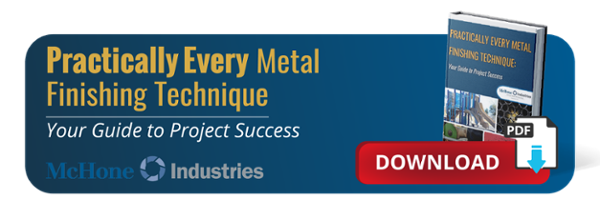
There are many types of abrasive blasting services, including: glass bead, sand, water, and wheel are a few others. Abrasive blasting is used to remove rust, dirt, old paint, and any other residue from the metal's surface to prepare it for finishing.
The type of abrasive that you use will depend on how dirty the metal is and how much blasting it can withstand. Delicate materials require a gentler blasting technique to avoid scratching the surface.
Two of the most common blasting materials are glass beads and sand.
Bead Blasting Considerations
Bead blasting uses tiny glass beads to clean impurities from a metal's surface. Glass beads are one of the most gentle abrasive blasting materials for metals. The beads can be shot at the metal with air pressure or water.
Glass bead blasting is relatively inexpensive. Glass beads are cheap to produce, and they can be reused 30 times or so.
The beads themselves can vary in size and shape, which affects the surface texture after blasting. Smaller beads produce a smoother, shinier finish, while larger beads give the metal a coarser and more conductive texture. Round beads are gentler on the metal, while sharp-cut beads provide a heavy-duty cleaning.
Bead blasting leaves no residue behind, is environmentally friendly, and poses little to no health or safety hazards for personnel.
Sand Blasting Considerations
Although sand was once the default material in abrasive blasting, it has fallen out of favor due to health and safety concerns, its lesser effectiveness, and its effect on machinery. Really, sand's only true upside is its natural abundance.
Sand is a major health risk for personnel. In fact, many countries have banned sand blasting due to its effect on the human body. Sand contains silica; when silica gets into the lungs, it causes silicosis. The dust caused scarring in the lungs, making it difficult to breathe. Silicosis is almost inevitable in workers who do sand blasting.
Sand blasting is also not as effective as other types of abrasives, and it's not recyclable. Sand that goes through the machinery once is turned into a fine powder with no abrasive qualities. Compared to glass beads and other forms of reusable abrasives, sand is very short-lived.
Finally, sand has a high moisture content and more impurities compared to other materials. Both issues can cause blockages in machinery, erosion, and equipment failure.
Bead Blasting vs Sand Blasting: Key Takeaways
Overall, sand is a pretty poor investment if you're interested in abrasive blasting services. Bead blasting is friendlier to the machinery, employees, and environment.
Sand is also not reusable, which can make it more expensive in the long-run, and overall a more unsustainable option.
For more information on cutting costs throughout your processes, explore this e-book:

Editor's Note: This blog post was originally published on February 17, 2016 and was republished on October 6, 2019 to reflect updated insight and resources.

